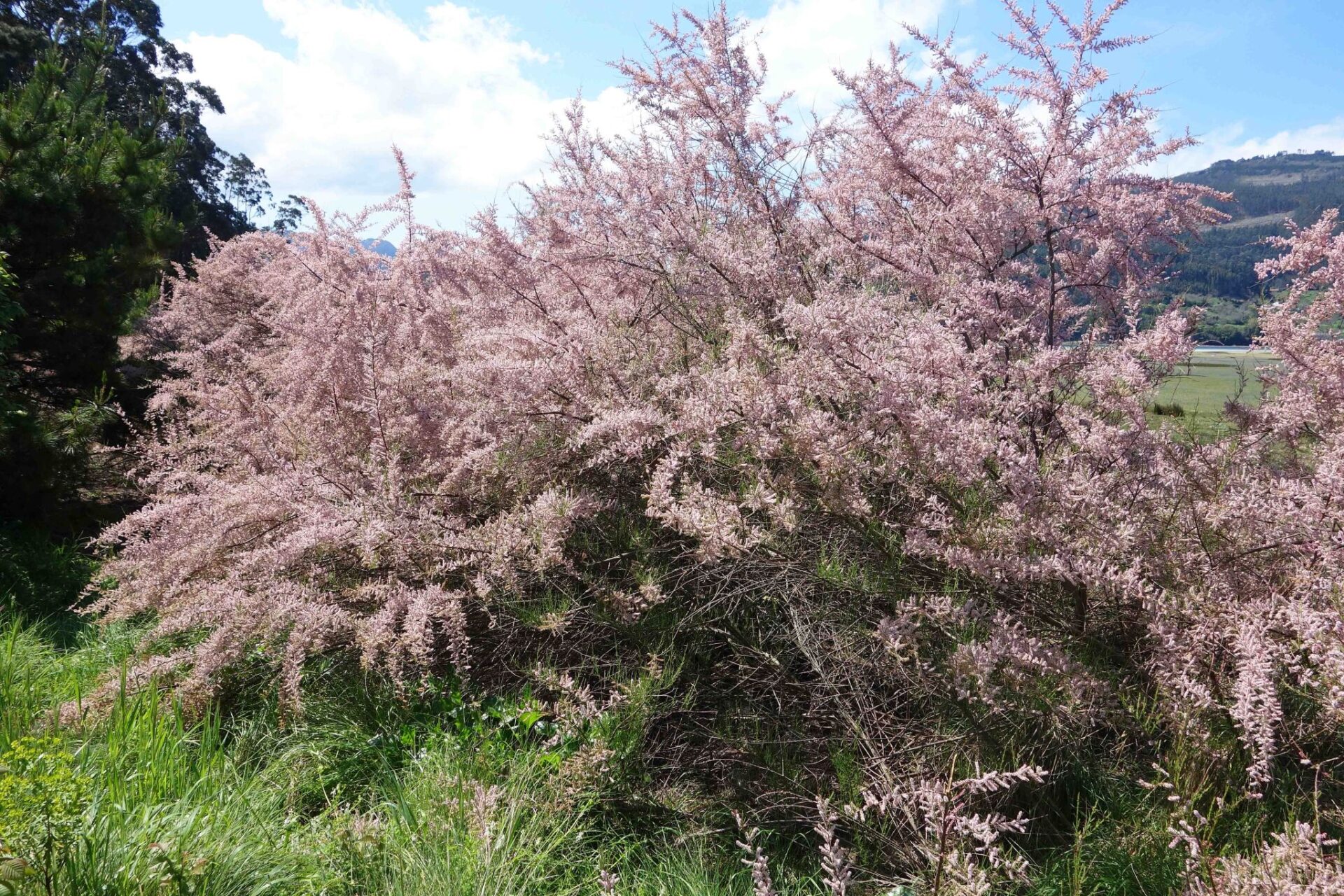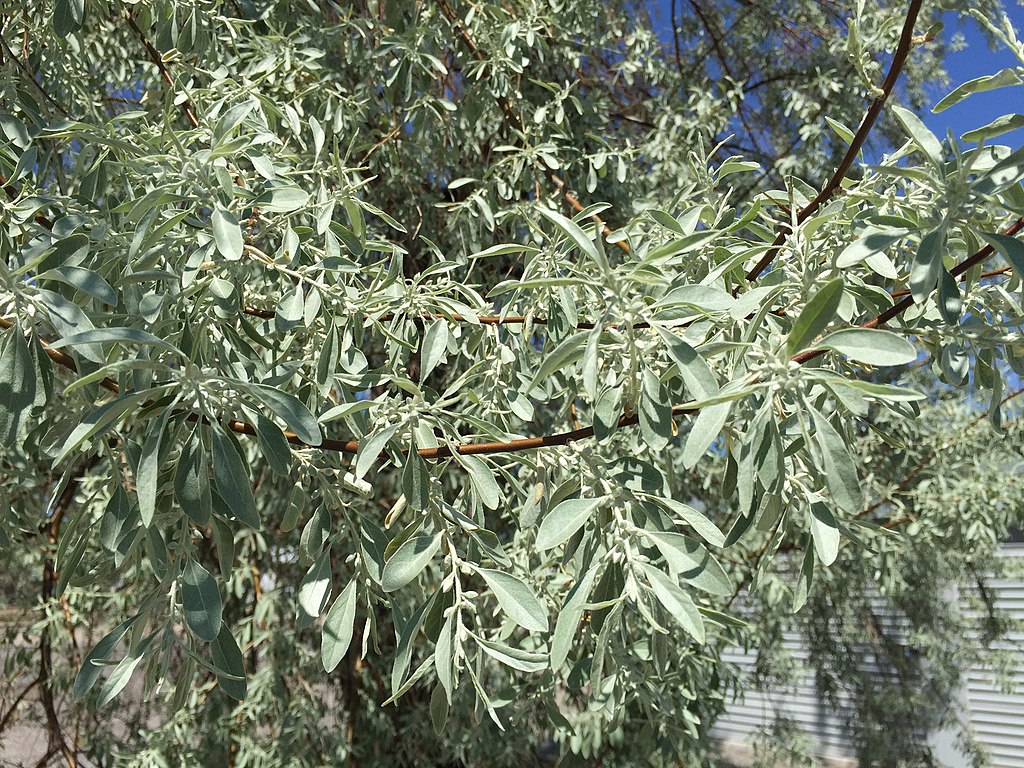What are tamarisk & Russian olive?
Tamarisk and Russian olive are two types of noxious weeds that grow in Eagle County and are both designated as “List B” species on the Colorado Noxious Weed Act.

Tamarisk, also called Saltcedar, is a non-native shrub or small tree that grows from 5 to 20 feet tall and is most often found along riverbanks or other wet areas. It crowds out native vegetation and increases the salinity of the soil, making it much harder for native plants to grow. Tamarisk also uses A LOT of water; a mature tamarisk plant can take up around the same amount of water as a mature cottonwood tree.
For more information about tamarisk & identification, check out the Colorado Department of Agriculture website.

Russian olive, is a non-native tree with silvery leaves and has olive-shaped fruits. Though it can grow in a variety of areas, it prefers open riparian zones. It also crowds out native vegetation and can interfere with key nutrient cycling. It also can use a lot of water, making drought conditions worse.
For more information about Russian olive & identification, check out the Colorado Department of Agriculture website.
